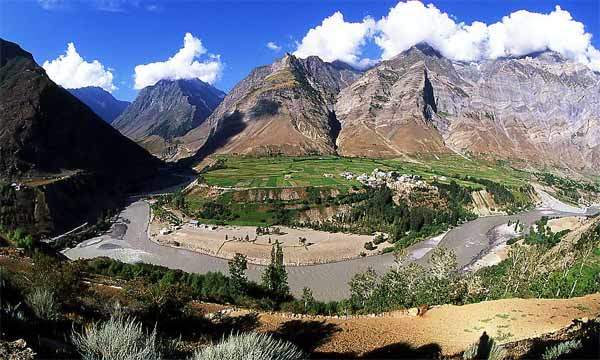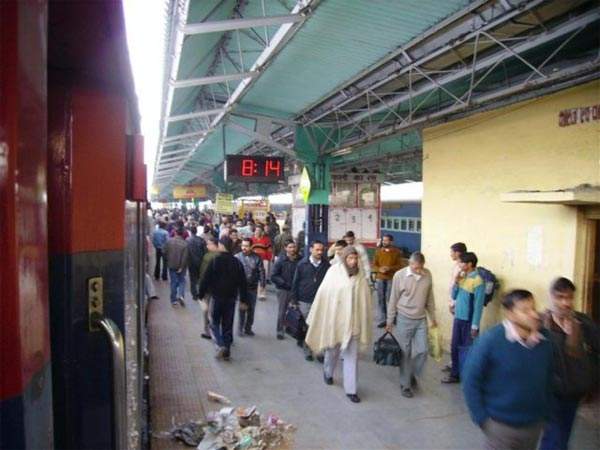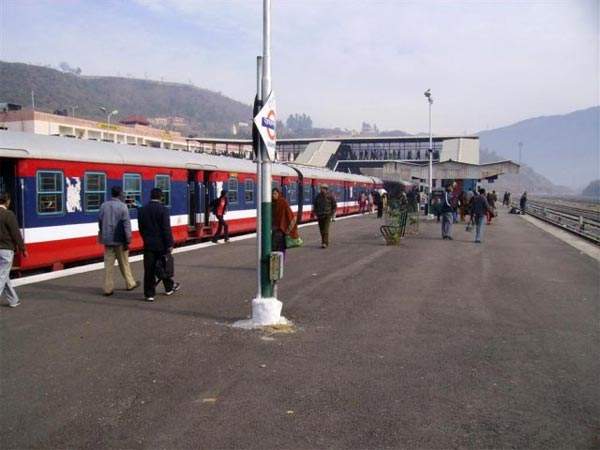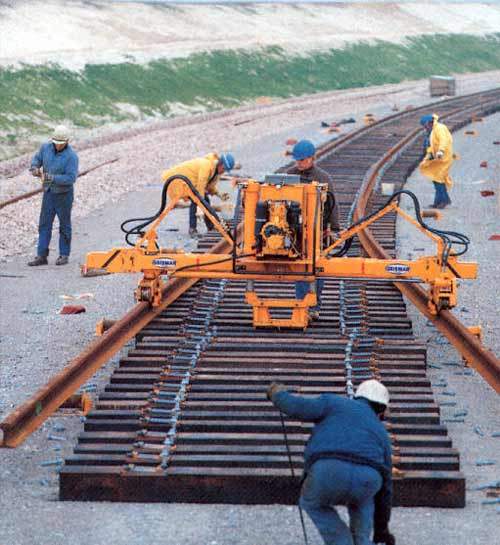India is undertaking one of its most challenging railway projects ever by building a line to connect Kashmir with the Himalayan foothills. The Kashmir Railway Project (KRP) is being developed to provide an alternative and reliable transportation system to the state of Jammu and Kashmir. The line is officially called the Jammu-Udhampur-Katra-Quazigund-Baramulla link (JUSBRL).
KRP is the only railway line in mountainous ranges in India that is being constructed in broad gauge. The estimated cost of the project is $13bn. The 345km extension of the Indian Railway network will allow a 900km (560 mile) journey direct from Delhi to Srinagar, the capital of Jammu and Kashmir.
At the moment Kashmir is connected to the rest of India only through road.
Far from being an ordinary scheme, the 345km route crosses major earthquake zones, and is subjected to extreme temperatures of cold and heat, as well as inhospitable terrain.
The idea of bringing organised transport to the Kashmir Valley is nothing new. The first proposals were made in 1898 and this was followed in both 1902 and 1905 by British-led plans to reach the region by rail, including a 2ft or 2ft 6in gauge electric railway climbing to 11,000ft over the Pir Panjal Mountain Range. None of these were built.
Further proposals emerged in the mid-20th century, but it wasn’t until 1994 that Indian Railway Minister Jaffer Sharief made headway in building a line to Baramulla and the Kashmir Valley.
In 2001, the Kashmir Railway received National Project Status from the Indian Government and has seen unlimited funds provided to it. The Railway Ministry itself does not have sufficient funds to tackle the project.
The project
The KRP line connects Jammu and Kashmir’s winter capital Jammu to its summer capital Srinagar. There will be 30 stations and they will be served by ten to 12 trains a day.
The entire project is divided into four sections. The first section, referred to as Leg 0, stretches 53km in the sub-mountainious region. The line that connects Jammu to Udhampur includes 158 bridges (36 major and 122 minor bridges) and 10km tunnels. The cost of the first section is about $114.2m. This section was opened in April 2005.
The second section, Leg 1, connects Udhampur to Katra. Leg 1, which involves construction of 25km track, is under construction and is scheduled to be completed in 2011. Leg 1 will include 10.9km of tunnels, 38 major and minor bridges and ten ROB/RUBs. A 90m bridge is the tallest bridge in this section, while the longest tunnel is 3.15km.
The 148km third section (Leg 2) will connect Katra to Qazigund and is scheduled to be opened in 2016. It is the most challenging section, as it involves construction of many tunnels and viaducts. A 1.3km bridge being constructed across the river Chenab is the world’s tallest railway bridge. It will be 359m above the bed level of the river. It is being managed by Konkan Railway Construction between Salal and Laol stations.
Leg 2 also involves construction of 300km access road. An access road of 110km has already been constructed. A tunnel 10.95km long is being constructed at Quazigund and will be the longest tunnel for the railway.
The fourth section/Leg 3, which connects Qazigund to Baramulla, stretches 119km in the Kashmir Valley. It includes 704 major and minor bridges across rivers, canals and roads.
This section was completed in October 2009. However, this will remain isolated until section 3, which includes construction of the Chenab River crossing, is completed.
The project was aimed to be completed by August 2007. However, the completion date was put back due to suspension of work on Leg 1 and uncertainties in Leg 2 works.
Infrastructure
The alignment for the Kashmir Railway presents one of the greatest railway engineering challenges ever faced, with the only contest coming from the China-Tibet rail route which crosses permanently frozen ground and climbs to more
than 5,000m above sea level.
While the temperatures of the Kashmir Railway area are not as severe as China, it does still experience extreme winters with heavy snowfalls. However, making the route even more complex is the requirement to pass through the Himalayan foothills.
The route includes many bridges, viaducts and tunnels – the lower section of the railway crosses a total of 158 bridges and passes through 20 tunnels.
Even though the line is being built through a mountainous region, a ruling gradient of 1% has been set to provide a safe, smooth and reliable journey.
It is being built to the Indian standard gauge of 1,676mm gauge, laid on concrete sleepers with continuous welded rail and with a minimum curve radius of 676m. Maximum line speed is 100km/h (60mph).
The Kashmir line will connect with the Indian Railways railhead at Jammu, where a 60km access route has been built to Udhampur. The main sections of the route are between Udhampur and Qazigund – 75% in tunnels and the responsibility of Konkan
Railway Construction Corporation – with the Qazigund-Baramulla section constructed by Indian Railways.
Rolling stock
Rolling stock for the new route will be from the existing national fleet. Both passenger and freight trains will use the new railway into and out of Kashmir. Passenger services will be provided by diesel multiple units. The service will at first be provided on a 45km section of the Qazigund-Baramulla section, running initially between Rajwansher and Anwantipora.
Freight services conveying grain and petroleum products will run in between the ten to 12 passengers services that are planned to operate daily.
An eight-coach DEMU will run on the Quazigund-Baramulla section of line. The coaches were transported to the valley by using specially modified road trailers and each coach will carry 90 passengers. It will run twice a day in both directions. The train has been fixed with a snow cutter system for clearing snow on the track. The temperature in coaches can also be maintained at 20°C during winter.
Signalling and communications
Three-aspect colour light signalling is being installed on the route to maintain train safety. GSM-R equipment may be installed in the future to improve the quality of the system.











